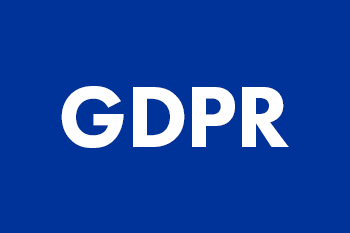A 2-year longitudinal study examining the change in psychosocial factors under the COVID-19 pandemic in Japan … – Nature.com
May 29, 2024
Participants and data collection
The online survey was conducted on May 11-12, 2020 (Phase 1), June 1420, 2021 (Phase 2), and May 1330, 2022 (Phase 3). Phase 1 was undertaken during the first state of emergency, while Phase 2 was carried out during the third state of emergency. The online survey in Phase 1 was conducted among residents in seven prefectures in which the state of emergency was declared relatively early (Tokyo, Kanagawa, Osaka, Saitama, Chiba, Hyogo, and Fukuoka prefectures) to accurately assess its impact. The inclusion criteria were as follows: (a) residents of the seven prefectures, and (b) aged 18 years or older. The exclusion criteria were as follows: (a) under 18 years of age, (b) high school students, and (c) living outside the seven prefectures. Phase 1 had 11,333 participants, with the number of participants from each prefecture based on the ratio of the number of people residing in each prefecture (Tokyo: n=2783, 24.6%; Kanagawa: n=1863, 16.4%; Osaka: n=1794, 15.8%; Saitama: n=1484, 13.1%; Chiba: n=1263, 11.1%; Hyogo: n=1119, 9.9%; Fukuoka: n=1027, 9.1%). In Phase 2, residents living in Kanagawa, Saitama, and Chiba prefectures, where the emergency declaration did not apply, were excluded from the survey, and 4,592 residents of Tokyo, Osaka, Hyogo, and Fukuoka participated in the follow-up survey. In Phase 3, an additional follow-up survey was conducted with some participants who had participated in Phase 2 (N=3892).
Study participants were recruited through Macromill Inc. (Tokyo, Japan), a global marketing research company. The company has more than 1.3 million registered members from all prefectures in Japan, with diverse characteristics (e.g., both genders, a wide range of age groups, and occupational statuses). The online survey system automatically eliminated duplicate responses from single respondents. A recruitment invitation was sent via e-mail to approximately 80,000 registered respondents living in the target area, and data were collected online. Upon receiving the link, participants completed an online survey voluntarily and anonymously, after providing informed consent online. Participants were given a clear explanation of the survey procedures and the release of data in a form that did not identify individuals and had the option to discontinue or terminate the survey at any time without providing a reason. Except for the default items provided by Macromill (gender, age, occupation, household income, marital status, and presence of children), the survey format did not allow participants to proceed to the next page if there were unanswered items. In addition, all participants were awarded Macromill points that they could exchange for prizes or cash.
This study was approved by the Research Ethics Committee of the Graduate School of Social and Industrial Science and Technology at Tokushima University (Approval No. 212). This study was conducted in accordance with the ethical standards of the 1964 Declaration of Helsinki and its amendments.
Sociodemographic information, including age, gender, employment status, marital status, and household income, was collected from participants. To discuss groups assumed to be vulnerable to lockdown in previous studies in the early stages of the pandemic9,10,11,12, information was collected on whether the individual or family member was a healthcare worker and whether the individual was currently or had previously been treated for mental health problems, severe physical illnesses, or COVID-19.
The Japanese version of the Kessler Psychological Distress Scale-6 (K6)13, a nonspecific psychological stress scale comprising six items, was used to measure psychological distress over the past 30 days. Each question was rated on a scale of 0 (never) to 4 (always), with total scores ranging from 0 to 24. The K6 is regarded as an ideal instrument for screening mental disorders in population-based health surveys because of its high accuracy and brevity13,14,15.
We adopted a threshold of five points commonly used to screen for mild-to-moderate mood/anxiety disorders16. Scores ranging from 5 to 12 indicated mild-to-moderate psychological distress. This is the optimal lower threshold for screening for moderate psychological distress16. Mild-to-moderate psychological distress is considered because of the associated risk of progression to more severe disability, as well as current distress and disability17. A threshold score of 13 has been traditionally used in previous studies14,18. A score of 13 was defined as serious psychological distress. Additionally, a score of 4 was defined as no or low psychological distress.
The Japanese version of the Patient Health Questionnaire-9 (PHQ-9)19 was used to assess depression. Participants reported depressive symptoms for the past 4 weeks on a scale of 0 (not at all) to 3 (almost daily)20.
A cutoff score of 10 or higher, as recommended by previous research, indicates a high probability of major depression19. The PHQ-9 has been used internationally as a screening scale for depression21, with high reliability and validity19.
Loneliness was measured using the Japanese version of the UCLA Loneliness Scale version 3 (UCLA-LS3)22, consisting of 10 items ranging from 1 (never) to 4 (always). The total score ranged from 10 to 40, with higher scores indicating greater loneliness23. The UCLA-LS3 has high reliability and validity and is used internationally as a scale to measure loneliness24,25,26.
Social networks were assessed by using the Japanese version of the Lubben Social Network Scale (LSNS-6)27. The LSNS-6 is a shortened version of the Lubben Social Network Scale28, and it includes items on the network size of relatives and friends who provide emotional and instrumental support. The LSNS-6 consists of three items related to family networks and three items related to friendship networks. The number of people in the network was calculated on a 6-point scale (0=none; 1=1 person; 2=2 persons; 3=34 persons; 4=58 persons; 5=9 or more persons) for each item29. Total scores ranged from 0 to 30, with higher scores indicating greater social networks and scores below 12 indicating social isolation.
Subjective happiness was assessed using the Japanese version of the Subjective Happiness Scale (SHS)30, a 4-item global subjective happiness scale. The response format is a 7-point Likert scale. One composite score is computed by averaging the responses to the four items, according to the reverse coding of the fourth item. The scores range from 1 to 7, with higher scores indicating greater well-being31.
The Japanese version of the Somatic Symptom Scale-8 (SSS-8) was used to assess the burden of physical symptoms32. The SSS-8 consists of eight items that assess the following physical symptoms: stomach or bowel problems; back pain; pain in the arms, legs, or joints; headache; chest pain or shortness of breath; dizziness; fatigue or low energy; and sleep disturbances. These items comprise four symptom domains: gastrointestinal, pain, cardiopulmonary, and fatigue. Participants reported the extent to which each symptom had bothered them in the past 7 days on a scale of 0 to 4 (0=not at all; 1=a little bit; 2=somewhat; 3=quite a bit; 4=very much)33.
Alcohol use was assessed using the Japanese version of the Alcohol Use Disorders Identification Test (AUDIT)34. As the AUDIT identifies the presence or absence of alcohol-related problems based on the past one year of alcohol use, the adoption of the AUDIT in a survey conducted every other year is optimal. The test consists of 10 items across three domains: hazardous alcohol use, dependent symptoms, and harmful alcohol use (three, three, and four items, respectively). Each item is scored on a scale of 0 to 4. The lowest AUDIT score was 0, and the highest score was 40. Higher scores indicated a higher likelihood and severity of hazardous drinking, harmful drinking, and alcohol dependence. Based on the WHO AUDIT cutoff criteria and the Japanese Ministry of Health, Labour and Welfare health guidance35,36, scores of 814 and 15 or higher were categorized into the hazardous drinking group and potential alcohol dependence group, respectively. Participants who scored 7 or less were placed in the no alcohol problem group.
With extensive reference to the literature on the COVID-19 pandemic9,10,12,37,38, we developed eight lifestyle and coping behavior items, and seven stressors were assumed to be associated with the COVID-19 pandemic (refer to Yamamoto et al.39). We asked participants to rate the frequency of implementation and their experience of these items from the start of the state of emergency (Phases 1 and 2) or the last 30 days (Phase 3), to the time of the survey, on a scale of 1 (not at all) to 7 (extremely). The details of these items have been described in our previously published articles.
Read the original here:
A 2-year longitudinal study examining the change in psychosocial factors under the COVID-19 pandemic in Japan ... - Nature.com


